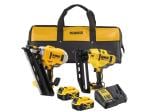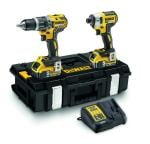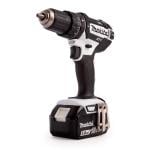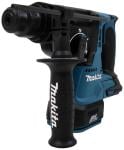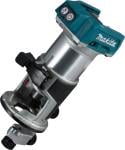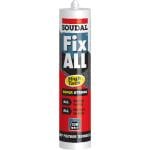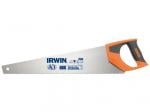Brad Nailer Vs Finish Nailer
There is often some confusion as to the differences between a brad nailer and a finish nailer. Both of them look quite similar, which explains the confusion, however, that doesn’t make them interchangeable. Certainly, brad nailers do look like smaller framing nailers, however, they do have different application uses, so you must choose the right tool for the job. To make your life easier, we’re going to clear up some of the confusion by examining both the brad nailer and finish nailer to understand them better. By the end of this article, you should have a clearer idea as to:
- The key differences between a brad nailer and a finish nailer
- The pros and cons of using each
- What tasks each tool is best suited to
Let’s get stuck in!
What is a brad nailer?
So, what is a brad nailer? Well, the brad nailer was introduced after the finish nailer, with the simple focus of providing a nailer that can shoot thinner nails (the brad nailer typically uses 18-gauge nails). As such, you’ll want to use a brad nailer only on the smaller applications where you might be worried about splitting the wood, or that the size of the nail might be too large. The fact is, any nail will leave a hole in the wood, so you’ll want to opt for a nail that isn’t going to leave too big of a hole. A brad nailer using 18-gauge will certainly create a reduced hole size, thus leaving less of a mark on the woodwork. And the best part is that depending on the materials that you are working with, you might not need to fill any holes before painting, allowing you to work faster and without delay.
What tasks are brad nailers typically used for?
Brad nailers are most commonly used for the following tasks:
- Baseboard
- Casing
- Panelling
- Trim work
- Decorative moulding
What are the pros and cons of a brad nailer?
OK then, so what are the pros and cons of using a brad nailer? Let’s take a closer look… Brad nailer pros:
- Brad nailers are ideal for thin or more delicate wood that you are concerned about splitting
- They leave small nail head holes with little trace
- Brad nailers can also be used as a temporary place-holder when intending to use glue. All you need to do is remove the nails once the glue has dried, leaving nail holes that are barely visible to the naked eye
- The smaller nails used in a brad nailer are suitable for smaller projects (e.g., crafting picture frames or attaching decorative trims and edges)
Brad nailer cons:
- A brad nailer isn’t suitable for large and thick pieces of wood. The smaller nails won’t penetrate think plywood or MDF
- If you opt for a pneumatic nailer instead, you’re still going to have to purchase an air pump
What is a finish nailer?
So, what is a finish nailer? For one thing, people often get confused by the term ‘finish nailer’, as it is a term often used to describe nailers that range from 15 to 18-gauge nail size. The primary difference that you should be aware of, between a finish nailer and a brad nailer, is simply the gauge of the nail. Finish nails are much thicker (15 / 16-gauge), whereas brad nailers only use 18-gauge. Don’t worry too much about the terminology used, however, as it can be misleading. The main difference ultimately comes down to gauge size for the fasteners that each of the power tools are designed to use. Another feature of the finish nailer is that they can create a much stronger hold. You can use a finish nailer for putting together cabinets, crown moulding, and heavy baseboards to name a few. These are tasks that simply cannot be completed with a brad nailer, so be mindful. In addition to that, a finish nailer comes available in two different designs: angled and straight—the key difference being that angled finish nailers are easy for using in tight spaces. Thus, depending on the type of project you are working on, an angled finish nailer might be more appropriate. Aside from angled and straight design, finish nailers can also come in pneumatic and cordless versions as well. The pneumatic tools are certainly much more powerful, whilst being significantly lighter—ideal if you already have an air compressor in your workshop. Otherwise, a cordless finish nailer will certainly be able to get the job done. Then again, it all depends on the type of work that you are carrying out. For example, if you’re working up a ladder, the last thing you need is to be trailing a cable behind you.
What are finish nailers most commonly used for?
So, what are finish nailers most commonly used for? Here is a list of some tasks that a finish nailer is ideally suited for:
- Cabinets
- Chair rails
- Installing base mouldings and crowns
- Exterior trimming
- Staircases
- Softwood and hardwood flooring
What are the pros and cons of using a finish nailer?
So, what are the pros and cons of using a finish nailer power tool? Let’s take a closer look… Pros of using a finish nailer:
- Finish nailers are designed to hold much heavier and thicker wood. This is because the nails are both longer and wider
- A finish nailer can be used to create a permanent hold. Once a finish nailer drives a nail in, it’s not going to be going anywhere soon
- They are versatile and can be used on a wide range of surfaces and materials with ease
- The nails come available in long strips which means that you can work for longer without needing to reload
Cons of using a finish nailer:
- Finish nailers are not suitable for use on thin and delicate materials. Again, the nails are wide and long and given the extra power, there’s a high chance that it will split any thin materials
- Large nail holes are left behind, which you will need to fill, thus adding more time to your process
- You will need to invest in an air pump if you do not already own one (if you want use of a pneumatic nailer for additional power)
Conclusion
And that about sums it up. A brad nailer is the lighter of the two, better suited to smaller and more intricate tasks. A finish nailer, on the other hand, should be seen as the heavy-duty nailer that is ideal for larger tasks with thicker materials. Take the time to think about the type of tasks that you will be carrying out. If your work is more heavy-duty, then a finish nailer will be a great investment. Otherwise, you can’t go wrong with a brad nailer.


